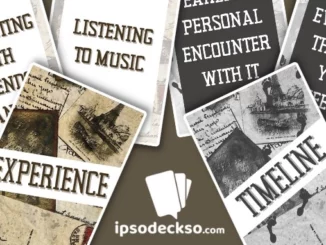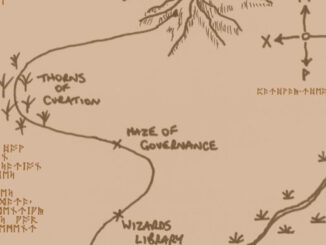
This article was previously published at the FocusU blog.
I learnt things the hard way and this article is an attempt to reflect on the mistakes I made while collecting feedback for online games-based learning courses and gamified content. In my experience, the following holds true regardless of the type of content – gamified, storified, serious games, elearning, microlearning or nanolearning. If you are an online learning designer or just someone who is learning about using online courses, I hope you add to my points to help me and other learning designers become better.
Seeking feedback at the far end of the course
It is very likely that you have witnessed innumerable courses with a feedback link at the very end of the course. There’s nothing wrong with it, but let me pop the bubble for all learning designers out here. This is the most predictable thing you can do with your wonderfully crafted gamified content.
Let’s take a step back
We are here talking about content that is not only educational, but also engaging. This means there should be a healthy dose of unpredictability to it. The obvious problem with this is that many learners may never get to the end, here. If this is the case, you have already lost the opportunity of capturing unheard voices. Let’s also address the elephant in the room – Who is this feedback for? If your answer is – for you, so you can make the course better, that is just one part of the answer.
It is true that after spending hours in content curation and experience testing, as learning designers, we would like to know how we fared. We may also like to jump right in, and course correct in case there are some participants who have shared areas of improvement. However, the overlooked, often ignored part, of this is that a lot of this feedback is for the learners themselves.
Think about it – when they are asked a question such as, “Can you think of an example of something similar from your day-to-day life? “, the learners are really reflecting on how the course related to them. In parallel, for the learning designer, if such a question is being left unanswered, it leaves room for some food for thought. Perhaps, the learners don’t have adequate information to relate it back to their lives, or perhaps this question is too repetitive, or asked too soon.
While asking for feedback at the end of the course is the most used mechanism of asking for feedback, there are several subtle ways to ask for feedback all through the course too. Here are some of the ways that I have tried, tested, failed and then course corrected. I hope they help you, too.
1. Include reflective questions

Reflections or drawing from past experiences is one of the best ways to bring awareness to what learners already know. As a learning designer, you could use reflective questions throughout the course. An effective way to do so is to use a cocktail of video, photo, multiple choice, and text submissions. This ensures that the feedback does not feel repetitive for the learners. It also adds a layer of fun to questions that can otherwise become really mundane.
2. Gauging engagement levels
Social engagement within the learning group, whether it is through upvoting the submissions made by their fellow learners, or comments, or even based on the promptness of the submissions, voluntary engagement (gauged by minimal nudges) – these are all effective measures of seeking feedback. An alternate way to put this is – if the learners are not automatically gravitating towards the gamified content, despite the push notifications and reminders, it is time to course correct as a learning designer.
3. Social media

Of course, this may not work for all situations. It goes without saying that most people are on at least one social media platform. Encouraging opportunities such that learners can share their experience on social media platforms of their choice, using unique hashtags given by the learning designer, is a wonderful way of creating a community that engages in playful way of learning.
Furthermore, if the course is designed to be an open course, this may even create a positive spiral that attracts more participants.
4. Difficult questions
Most of the questions for seeking feedback are usually implemented in the form of a scale ranging from 1-10. The questions reading as – ‘How would you rate your experience?’ There’s no doubt that this is a great starting question but what about asking difficult questions such as “what made you skip a question?”, or “Would you still take this course if your organization did not make it mandatory?”, Or “Did you ever think that this course is not worth your time?” These are the questions that can help elicit real feedback. As learning designers, you want participants to look at the course objectively.
5. Crafting the right questions

As a learning designer, you should consider keeping a mix of questions that are multiple choice (like a star rating), and specific open-ended questions (such as “How you will apply the learning in work / life?”)
Creating a mix of questions will ensure that the learners don’t feel overwhelmed and interrogated, and yet feel heard.
6. Go beyond asking questions just about the content
To a learner, the course is an entire package from registration, payment, ease of access, ease of navigation, to the elements of gamification such as the points systems and badges, etc. Hence, there need to be questions that capture each pain point that the participant may have felt. Even those participants who were not able to access the course at all, should be able to reach the learning designer and provide feedback mentioning their difficulties.
7. Critiques are equally important

If all questions are worded to seek positive feedback, such as “How this course has helped you?” or “What will you do differently?”, learners will automatically let you know *just* that, or skip the question altogether (marking an N/A and moving on falls under this bracket too.) However, asking open ended questions about what the learners would want to change, or what the learners did not like in the course, are good ways to collect feedback that truly helps you design better courses.
8. Personalisation
An abrupt question at the end of the course is the worst way of ending well-curated content. The learners have spent time in engaging with the content. This is especially true if the content is spread out over a few days/ weeks. Hence, it is important to take a moment to acknowledge all the time the learners have devoted to the content. A note that is personalised to that group of learners is a wonderful way of letting the learners feel valued.
Conclusion

Personally, I love going through every feedback that I receive for the online gamified content, and I take the time to reply to each one. It is worth the time and has been my biggest mentor and constructive critic. In case you are not a learning designer but a consumer, please know that as learning designers, you are our greatest strength and supporters. And I really hope that you are able to share candid feedback each time you take up an online course.
If there is anything that has helped you, I’d love to hear your views. Know that I value each and every feedback, regardless of whether it is positive or not.
- How To Collect Feedback For Gamified & Digital Learning - 17th July 2021




